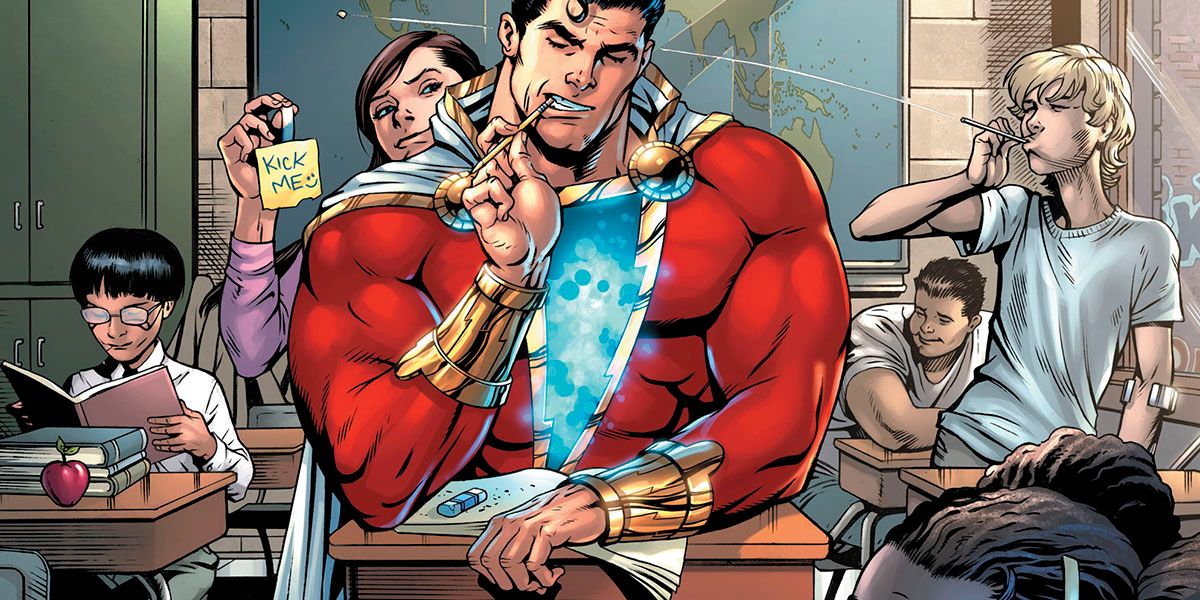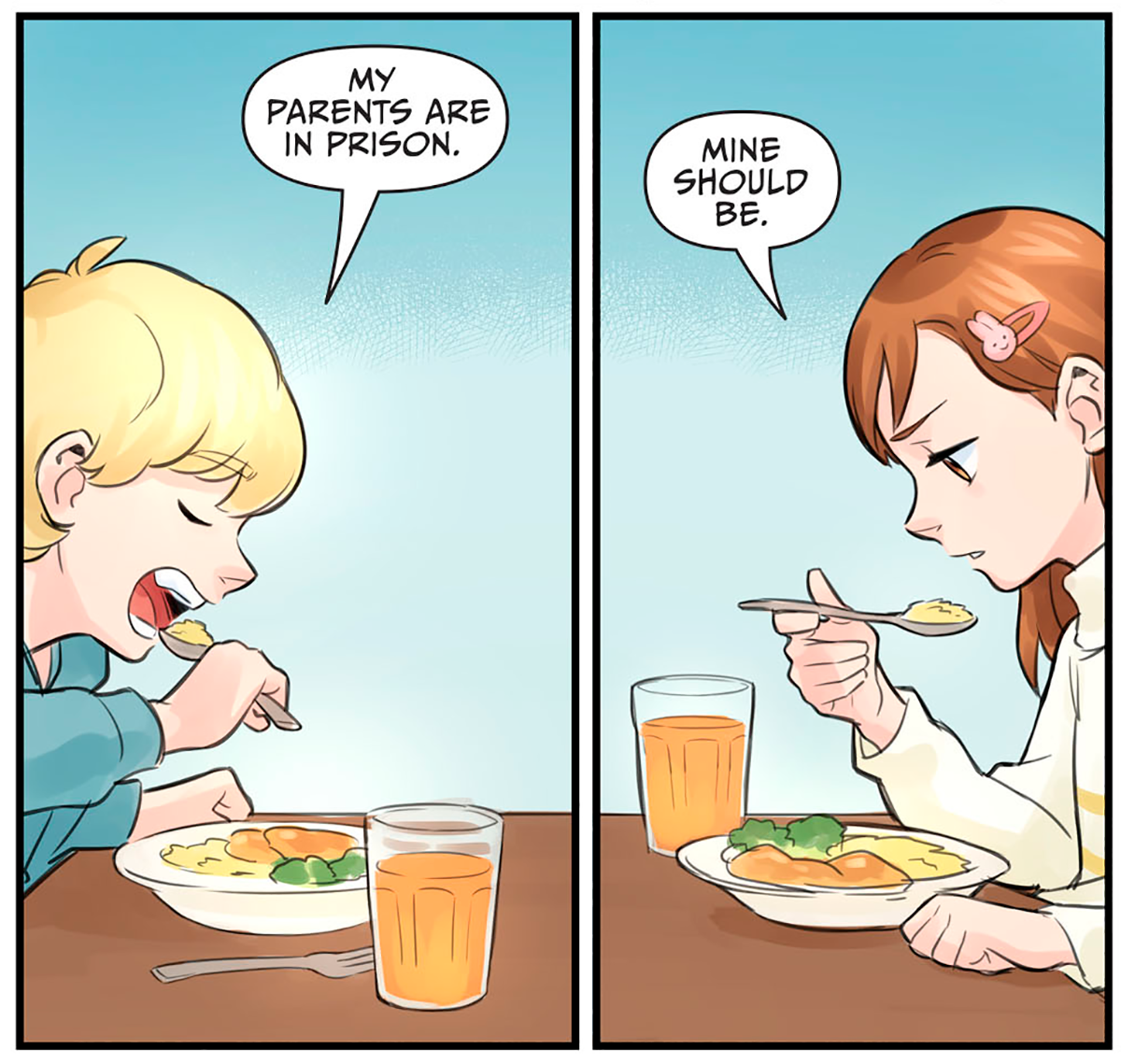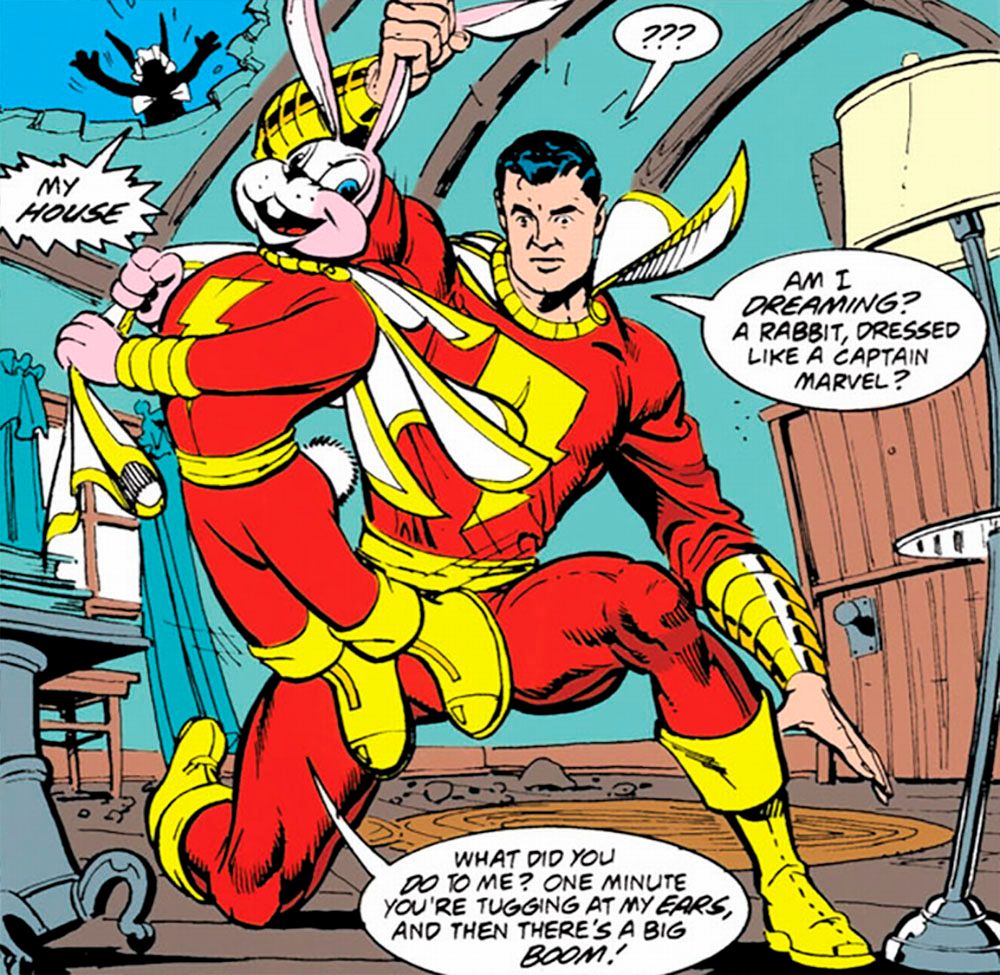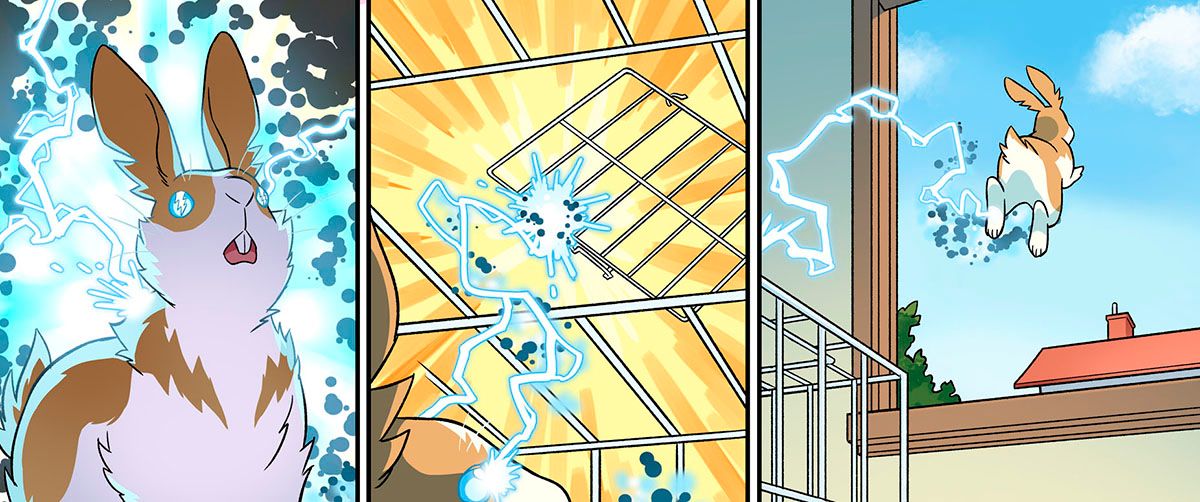SPOILER WARNING: The following article contains major spoilers for Shazam #1 by Geoff Johns, Dale Eaglesham, Mike Atiyeh, May “SEN” Naito and Rob Leigh, on sale now.
One of the most important thing about the Shazam Family, formerly the Marvel Family, is that stories about the group don’t take themselves too seriously. Things can get a bit weirder, or at least a bit more cartoonish, than your regular superhero franchises. Due to the child’s wish-fulfilment angle that makes the character such an enduring icon, concepts that maybe would have been modernized or outright eliminated as comics march towards a more realistic take on superheroes only serve to make Shazam stories stand out among the crowd.
This was a bit of a problem when Geoff Johns first took a stab at Shazam with his Justice League back-ups drawn by Gary Frank. The team, now working together on Doomsday Clock, tried too hard to modernize Shazam and make the concepts fit with in with the tone and aesthetic of The New 52. They played with some of the more cartoonish aspects of the Shazam Family, but in doing so they missed the point. For example, Tawky Tawny was no longer a well spoken tiger-man in a plaid suit, and instead was more akin to Battlecat from the Masters of the Universe.
RELATED: DC's Shazam Comic Will Resolve a 5-Year-Old Plotline
Thankfully, Johns’ second go-around with Shazam in the new ongoing seems to embrace what makes the characters and their stories so unique, and as a way of proving that, Shazam #1’s back-up story introduces one of the weirder and more cartoony members of the Shazam Family.
Runaway Girl
The back-up to Shazam #1, which features art by Mayo “SEN” Naito (who came to DC’s attention via Shazam fan-art and whose work you might recognize from the DC Ink and DC Zoom announcement image) is a story about who Mary Bromfield was before she came to live with the Vasquez family and met her foster brothers and sisters. Like many children in foster care, Mary came from an abusive home and chose to run away and live on the streets rather than spend another day with her aggressive and demanding parents. This is a major departure from Mary’s pre-Flashpoint origin, in which she was kidnapped as a child by Theo Adam and illegally adopted by the wealthy Bromfield family.
RELATED REVIEW: Shazam! #1 is a Wonderful Blast from the Past
In this new continuity, Mary was found sleeping rough and taken in by the Vasquez Family as their second foster child, arriving a few weeks after Freddy Freeman. Both kids took some time to bond together, but when Freddy helped Mary rescue a bunny from a pet shop that was destined to end up as one of Doctor Sivana’s test subjects, they bonded and learned to make their new house into home. A flash forward to the present shows Mary telling this story to Darla, the youngest of the Shazam Family, before they get a call from Billy and Freddy to meet them at the museum, syncing this story up with the main story of the issue. However, when Mary and Darla say the magic word, a small portion of their lightning hits the rabbit and imbues it with magical energy — it even gets little lightning bolts in its fur — and flies out the window after them.
NEXT PAGE: Shazam! The Super-Cute History of Hoppy the Wonder Bunny
The Marvel Bunny
Longtime fans of the Marvel Family will know that this rabbit represents a new take on what was once one of the most popular members of the superhero group: Hoppy The Marvel Bunny. Hoppy was created by Chad Grothkopf and first debuted in 1942’s Fawcett Funny Animals #1 . Unlike this new incarnation, Hoppy was from a land of anthropomorphized animals and as a fan of Captain Marvel, he spoke the word Shazam and was surprised when it gave him powers, although his powers came from animal themed gods: Salamander, Hogules, Antlers, Zebreus, Abalone and Monkury. His archenemy was Captain Black Bunny, a Black Adam pastiche who lived in the center of the Earth, and when DC acquired the rights to the Fawcett Library, they brought Hoppy to live on Earth-S with the rest of the Marvel Family in DC Comics Presents #34.
RELATED: Johns Hopes Fans Compare His Shazam Run to Waid’s Flash, Miller’s Daredevil
The character only appeared a handful of times in the post-Crisis DC Universe; he teamed up with Captain Carrot and his Amazing Zoo Crew in The Oz/Wonderland War, he made one appearance in Jerry Ordway and Peter Krause’s Power of Shazam #29 and his silhouette was noticeable in Limbo during Final Crisis: Superman Beyond, but that’s about it for Hoppy. Johns and Naito’s take seems to be quite different from that of previous incarnations of the character, but it does open up the possibility of more of the weird and wonderful corners of the Marvel Family and Fawcett Comics’ library to make an appearance as Shazam continues.
The Lieutenant Marvels
Over the 75+ years that Shazam has been around, there have been plenty of sidekicks, spin-offs and general hangers on, in addition to the ones you may know about from reading this issue. Perhaps the most well known one is Uncle Dudley Marvel, who never actually got any powers of his own but would instead rip off breakaway clothes to reveal a Captain Marvel costume underneath. His niece Mary Dudley briefly appeared in a similar role as Freckles Marvel and wore a Mary Marvel costume, but didn’t have any powers. Considering the young Darla’s surname is Dudley, it’s possible that Johns and company have plans for a revamped Uncle Dudley appearance in the near future.
RELATED: Shazam #1 Solicits Reveal the Series' Main Villains
Then there’s the Lieutenant Marvels who were all people also named Billy Batson that discovered that they could access the magic lightning of Shazam, because apparently the wizard isn’t too discerning with where it goes. The nineties also introduced a hero named Thunder who possessed the power of Shazam in the far future, and she occasionally teamed up with the Legion of Super-Heroes. As it stands now, the Shazam Family is quite large already and five of them still need codenames. It might be a while until we see any additions to the group, but the introduction of Hoppy The Marvel Bunny shows that anything and anyone is on the table.




